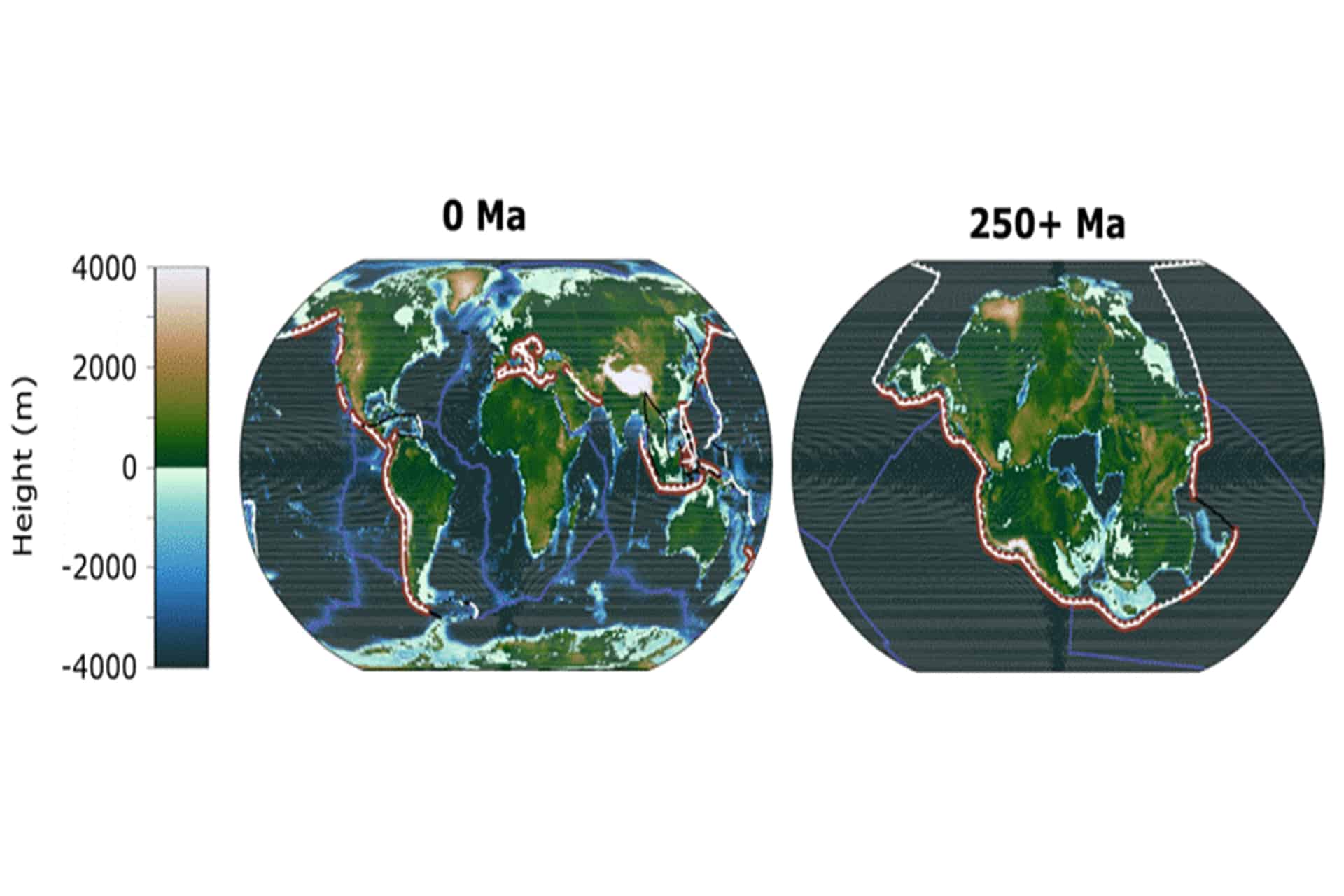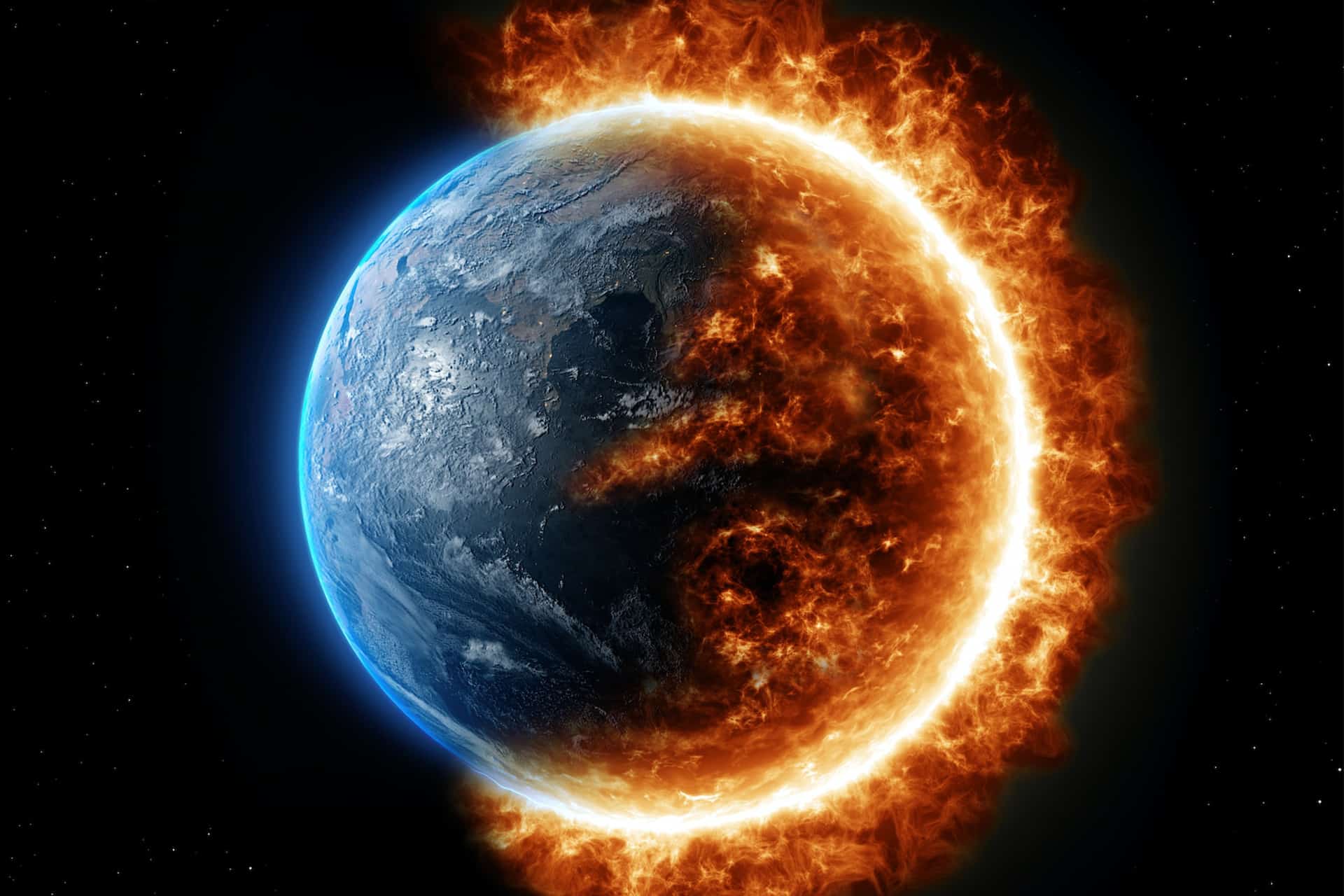Mammals are among the most successful animals in the world. We humans, especially, often behave as if we’re the mightiest beings ever born. However, the story of the formation of the next supercontinent might burst your bubble.
Researchers from the University of Bristol believe that 250 million years from now, all the continents will fuse together into a single supercontinent called Pangea Ultima. So far so good. However, the bad news is that it’s not only the planet’s landmass that will shift, but also its climate — and it will be so unbearably hot that the entire mammalian family as we know it wouldn’t be able to survive.
In their new study, the researchers shed light on the potential climatic conditions and geography of Pangea Ultima, and most importantly how its formation will affect us mammals.

The researchers used a climate model to study the humidity and temperature patterns that could emerge during Pangea Ultima. This model is very similar to those that provide weather forecasts every morning on the news.
However, it runs on a supercomputer and is much more complex and powerful. For instance, it is capable of predicting things like CO2 concentration and the amount of volcanic gases in the atmosphere on a global scale.
Here is what the researchers found when they projected their model 250 million years into the future.
The sun will become brighter and humans may make it worse
The researchers assume that humans (or our lineage) won’t exist millions of years from now. Therefore, our contribution to climate change is not counted and the model assumes carbon dioxide levels at pre-industrial levels as its starting point.
“This is completely natural climate change with no assumptions that humans even still exist at this point. Even if humans did, they may make this worse through increasing CO2 emissions and land surface change. However by this point in time we would hope that technologically we are far more eco-friendly with clean technology,” Alexander Farnsworth, first study author and a senior research associate at the University of Bristol, told ZME Science.
Based on this input, the model highlights three major climate shifts that could occur as a result of the reshuffling of the continents and the formation of Pangea Ultima:
- The fusion of continents alone is expected to raise land surface temperatures significantly, mainly because most o the surface area of the supercontinent will lie in the tropics.
- The sun will be around 2.5% brighter in 250 million years, further warming the world.
- The tectonic assemblage of the supercontinent is expected to trigger more volcanism in the atmosphere, resulting in a CO2 concentration of ~ 600 ppm. That’s nearly 50% more than today’s levels.
In this new world, the average temperature could exceed 40°C (104°F) in many parts of the world. Extreme humidity levels are likely to make the situation worse — and that’s not even the worst of it.
It is the prolonged exposure to such conditions that will eventually end up making most mammal species extinct. In fact, the study estimates that 92 percent of Pangea Ultima’s landmass will be unlivable for mammals.
“We show that the amount of land surface in such a world becomes significantly more arid and desertified. This has a detrimental impact on the ability of vegetation to grow as well as many regions being too hot for vegetation to grow. This will have a knock-on on effect species survival as you are undermining the food pyramid through a significant reduction of vegetated food sources and freshwater availability,” Dr. Farnsworth said.
Those who adapt will rule Pangea Ultima
The researchers highlight that most mammal species may disappear due to the formation of Pangea Ultima, but those already accustomed to living in extreme conditions and those which will be able to adapt to such conditions may still survive.

For example, some mammals that live in cold regions through adaptations such as fur and hibernation may continue to thrive even after 250 million years.
When asked to make a guess about the kind of life (or evolved version of mammals) that may inhabit and dominate the Earth after the formation of Pangea Ultima, Dr. Farnsworth replied:
“It may be that what mammals do remain, particularly those who have very specialist adaptations to higher heat, such as some small rodents that can live in very hot and dry regions such as the Sahara desert. Or it may be that reptiles are better suited to such heat. Indeed, it may be birds that have higher core body temperatures and can migrate much more easily over vast distances become the dominant species, it is very difficult to say.”
In the future, scientists can employ a similar model to study whether or not certain exoplanets detectable by the James Webb Telescope are suitable for humans or alien species.
“With the James Webb Space telescope potentially now able to sense water vapor and oxygen on other planets. One area of interest from this work stems from looking at the habitability of planets in other distant solar systems,” Dr. Farnsworth told ZME Science.
The study is published in the journal Nature Geoscience.


